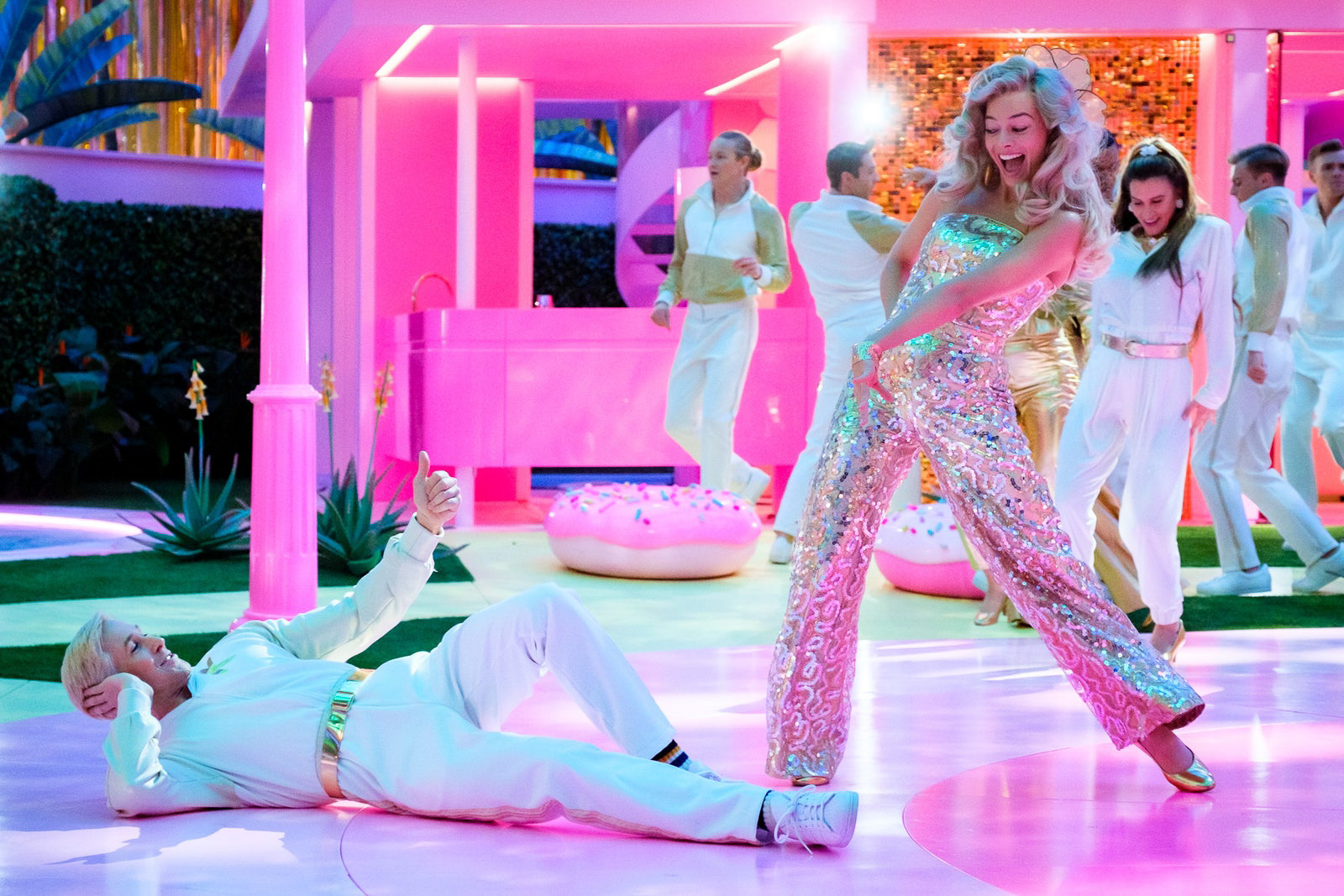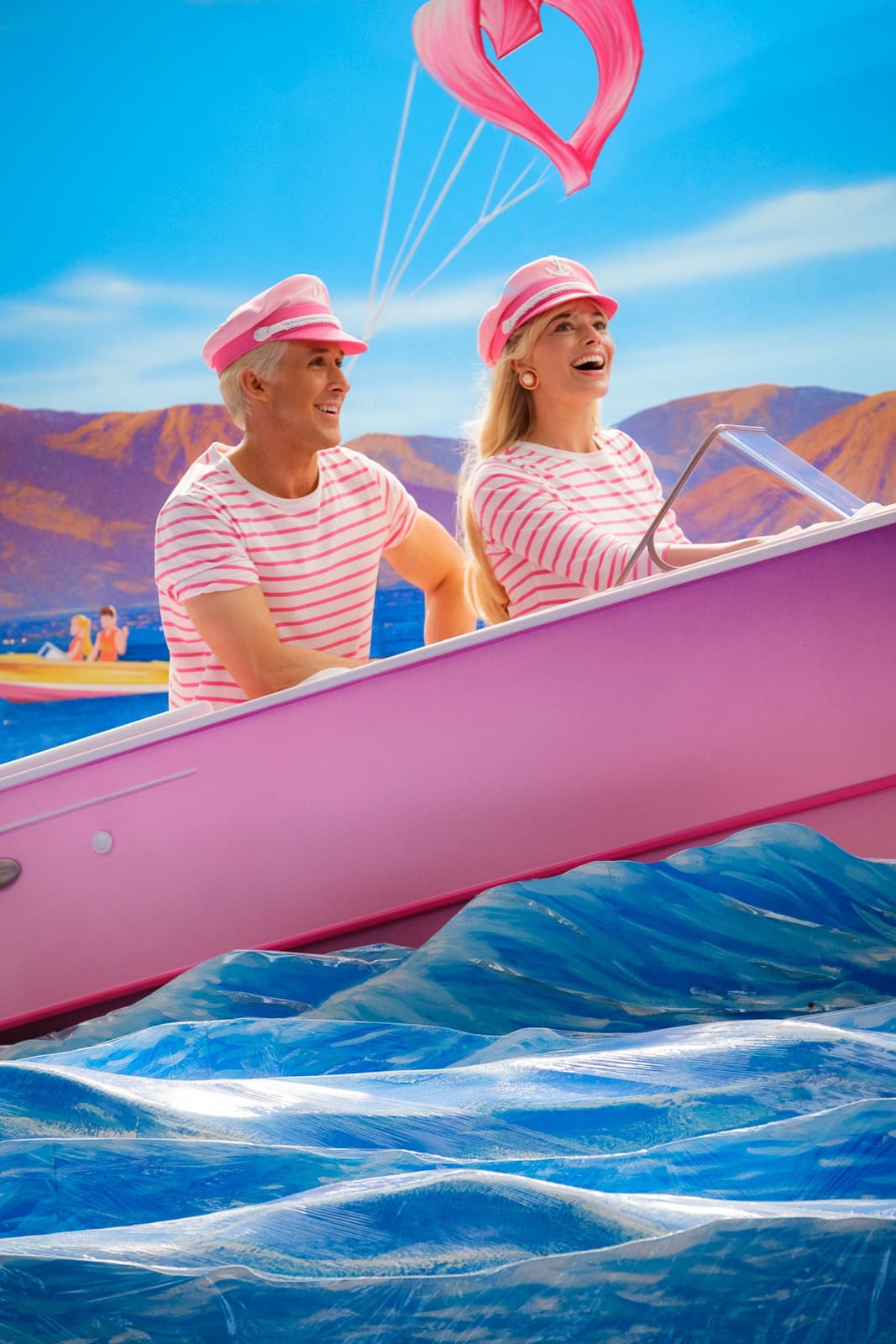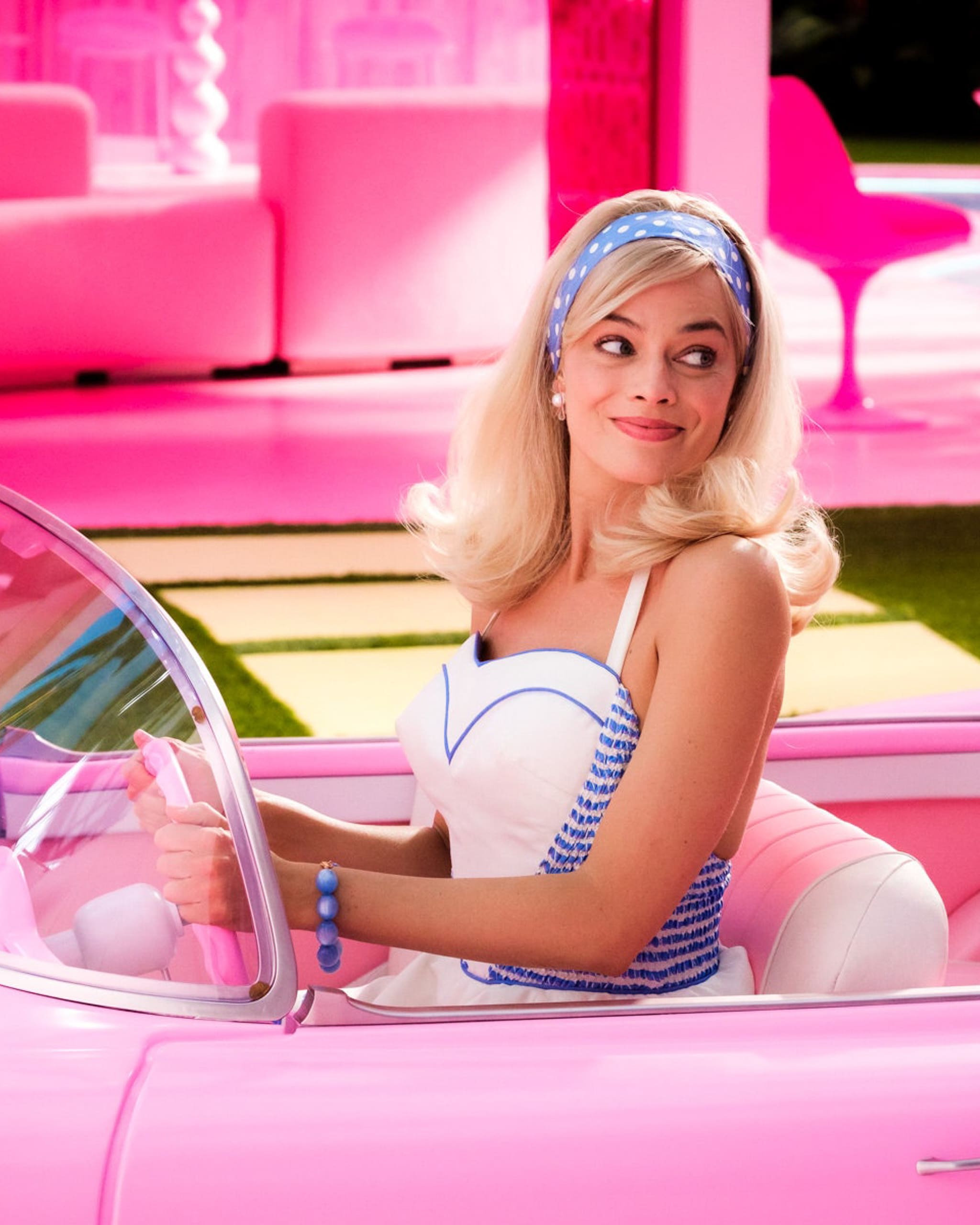Jaap Buitendijk
Jump in!
“Barbie really is interlinked with fashion, because how you play with her is by dressing her,” says costume designer Jacqueline Durran. “Clothes are her form of expression.” After winning an Oscar for her work on 2019’s Little Women, director Greta Gerwig asked Durran back for her next project: kitting out an entire Barbie world. Durran (who hails from London) noticed the process was different to that of her other projects: “You don’t treat Barbie like you treat a regular character because the motivation for what she’s wearing isn’t from within.”
Barbie is practical, really. “The defining characteristic of what she wears is where she’s going and what she’s doing,” Durran explains. “It’s about being completely dressed for your job or task.” Every doll is sold with a fashion pack, so to go to the beach, Barbie needs a coordinating dress, playsuit, bag, hat, suitable shoes, and accessories. These clothing sets change and morph depending on what is happening in Barbie Land.
The beach is a crucial setting for Gerwig’s film, “so Malibu Barbie is key.” But instead of a direct copy of an original doll, Durran also drew from the 1950s and 1960s for a retro twist inspired by Brigitte Bardot as a beach-babe idéale. All of the costumes in Barbie Land fit into one of roughly fifteen colour combinations “that riffed off the idea of a French Riviera beach in the early 1960s.” Think vibrant trios of perfect summertime pastels: “lavender, bright blue, light blue; green, orange, beige; orange, blue, pink; two pinks and a yellow…”
“I had buyers going out every day looking for clothes in specific colours in every shop in London,” says Durran.
Durran explains that the team had a rigorous chart of colour combinations to refer to throughout the process. “We wanted the world to be a really controlled environment,” she says. It gave structure to a dizzying task. “Greta writes at 100 miles an hour, often four scenes in a page of script… There’s a lot of costume changes,” she says with a laugh, of the hundreds of looks her team created. From Barbie refuse collectors to Barbie postal workers, there were dozens of jobs to dress, leaving Durran’s team trawling through shops for the perfect pink boilersuit or Barbified toolkit. For one costume – a doctor – the team pulled up pictures of every doctor Mattel had created in the past 60 years as inspiration.
With only eleven weeks to make everything, the team were still creating costumes as they filmed. That had one perk: the flexibility to keep adding new ideas. In one late fitting, actor Ryan Gosling came up with the idea for Ken-branded underwear for his character, a detail that went viral when the film’s marketing dropped. “We just rushed to make it,” she says.
His primary job being “beach”, Durran reveals colourful ’80s sportswear is a key Ken look, along with a few stretchy, disco boilersuits and some hyper-masculine cowboy looks. “Retro sportswear is one area where we did a lot of shopping for Ken,” she says. “He is sporty. That’s his main thing. We had buyers in America that went to dealers and imported it for us because we needed so much of it.”
Otherwise, as in life, Ken was more of an afterthought. “No one cares about Ken, everybody just wants to play with Barbie,” Durran says. “He matches Barbie and changes too but he has very, very, many less options.”
This, she thinks, links to a previously under-explored side of Barbie dolls – one that Gerwig is leaning into with her film. “I never thought of Barbie as having a feminist aspect – because of the body shape, you tend to think that she’s anti-feminist,” Durran says. “Before I started working on the film, I hadn’t realised Greta’s point that Barbie was revolutionary because it was the first time that girls started playing with somebody who had agency and did things, rather than a baby.

She sought to reference the history of the doll, starting with its very earliest incarnation: the 1959 Barbie, which sported a black and white one-piece swimsuit, red lipstick, blue eyeshadow and heels. Her almost identical recreation, debuted in the first trailer for the film; a 2001: A Space Odyssey parody. The first paparazzi shots from filming that showed Robbie and Gosling in acid-neon roller-skating looks were closely adapted from the 1994 Hot Skatin’ Barbie. “Ken is kind of a subsidiary of Barbie. So Hot Skatin’ Barbie is the influence on the rollerblading look in the real world, and Ken just has his own version.”
“I tried to reference the history of Barbie,” says Durran. “Where that came unstuck is that in the modern era, it’s more difficult to find looks that are recognisably Barbie. Because there’s so many looks. I asked Mattel to tell me the most popular Barbie costume of the last five years and they told me it was a Barbie in a yellow dress. It turned out that it probably wouldn’t be recognisable if I did an iteration of it.”
While reviewing the dolls’ many iterations, Durran notes that “Barbie is a very useful way to look at different ideas of femininity: what that means, who owns it, and who it’s aimed at.”
This is mirrored in the film. “Barbie is always about the ideal, so through the costumes, we give each character a look that reflects the ultimate Barbie look for where she is in the story at that moment. And, of course, in Barbie Land there’s more than one Barbie, so if they’re all going to the same event “they’re not in a uniform but they all match each other”. But as Margot Robbie’s Barbie goes through her character arc, her journey, the story drives her fashion choices and they evolve because she evolves.”
Carefully choosing her words to avoid spoilers, she teases that: “one aspect of the film is self-discovery – all of the Barbies but particularly Margot’s Barbie have a journey to go on, and we were able to choose elements of Barbie fashion that were appropriate for those scenes that also gave a subtle nod to her internal journey.” See: the Birkenstocks Margot’s Barbie is offered in the latest trailer.

Pink is important, of course. But it’s not everything. “It is a very strong part of her wardrobe but it’s not 100 per cent of her wardrobe,” Durran says. “But if you wanted to make something immediately look ‘Barbie’, I think pink does that for you.” The majority of the textiles in Barbie Land were sourced by her team, but “if Margot wears anything that we didn’t make, it’s pretty much Chanel,” who Margot has been an ambassador for since 2018. “They’re very interested in supporting cinema and in helping us find looks that will work in the story,” says Durran. “They sent us anything and everything that we wanted. They were just great to work with.”
From the fashion house’s archives, they pulled suits, beachwear, sportswear and accessories – mainly 1980s pieces. Anything good but not “the right size or colour, they remade for us”, she says. While her personal favourite is a contemporary Coco Beach pink dress with Chanel accessories – logo-maniac jewellery, bag, shoes – many of the looks had an ’80s flair. The reason? “Greta really liked things when they chimed with the date of the Barbies that she used to play with,” says Durran, merrily. “She was a great Barbie fan.”
This article was originally published on British Vogue.










